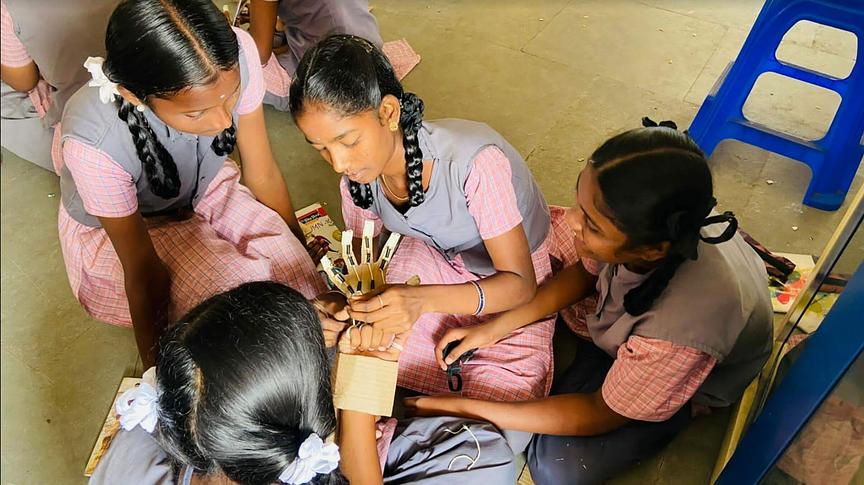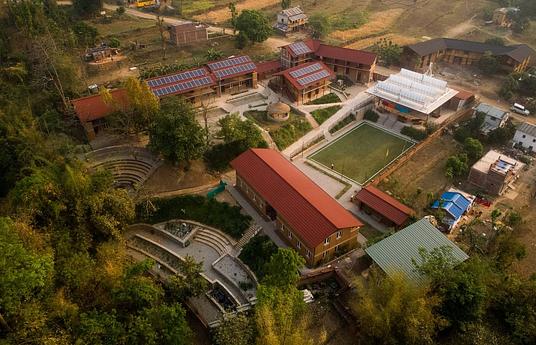What if communities had the space, resources, and support to drive innovation and social change for themselves?
This question is what drives us at MakerGhat. Our programs aim to build a sense of agency and confidence among youth. We provide them the space and tools to think critically about challenges locally and beyond, and leverage resources at their disposal to build sustainable solutions.
MakerGhat builds low-cost makerspaces in schools and communities, accompanied by evidence-based curriculum and robust teacher training. Our programs develop key skills and attitudes linked to employability through hands-on training. Youth aged 12 to 18 years spend at least 1.5 hours a week on our program to develop fundamental 21st-century skills linked to employability: critical thinking, problem-solving, self-efficacy, and communication and collaboration.
Our model involves four elements:
1. Safe physical spaces with portable kits: low-cost makerspaces or portable kits equipped with tools and materials, help with maintenance and daily operations
2. Training: training of teachers and administrators on strategies to build a culture of making and student-led learning
3. Curriculum: weekly workshop, aligned with syllabus, research-backed, customisable per grade and region, open-source
4. Monitoring and Evaluation: weekly embedded assessments, data-driven model, audit every month.
Our goal is to reach a million youth by 2025. We engage in direct implementation in collaboration with government and non-profit institutions, working towards eventually being integrated into state and national school boards. We also aim to make our maker labs and curriculum open-source and accessible to enable anyone to build a maker culture in their community. As part of this initiative, we have developed a fellowship model as well and are hosting all our training content on YouTube.
We have reached over 50,000 youth to date, and are targeting 500,000 youth in 2022-2023 through partnerships with nonprofit and government stakeholders. We have programs in the states of Tamil Nadu, Andhra Pradesh, and Karnataka, and are expanding to Kerala and Maharashtra.
We are committed to sharing our program resources with anyone interested in building a maker culture in their school or community! Please reach out at makerghat@gmail.com if you would like to work with us.
Over the course of this year, we are making our materials open source to enable anyone, anywhere to start a maker space!



